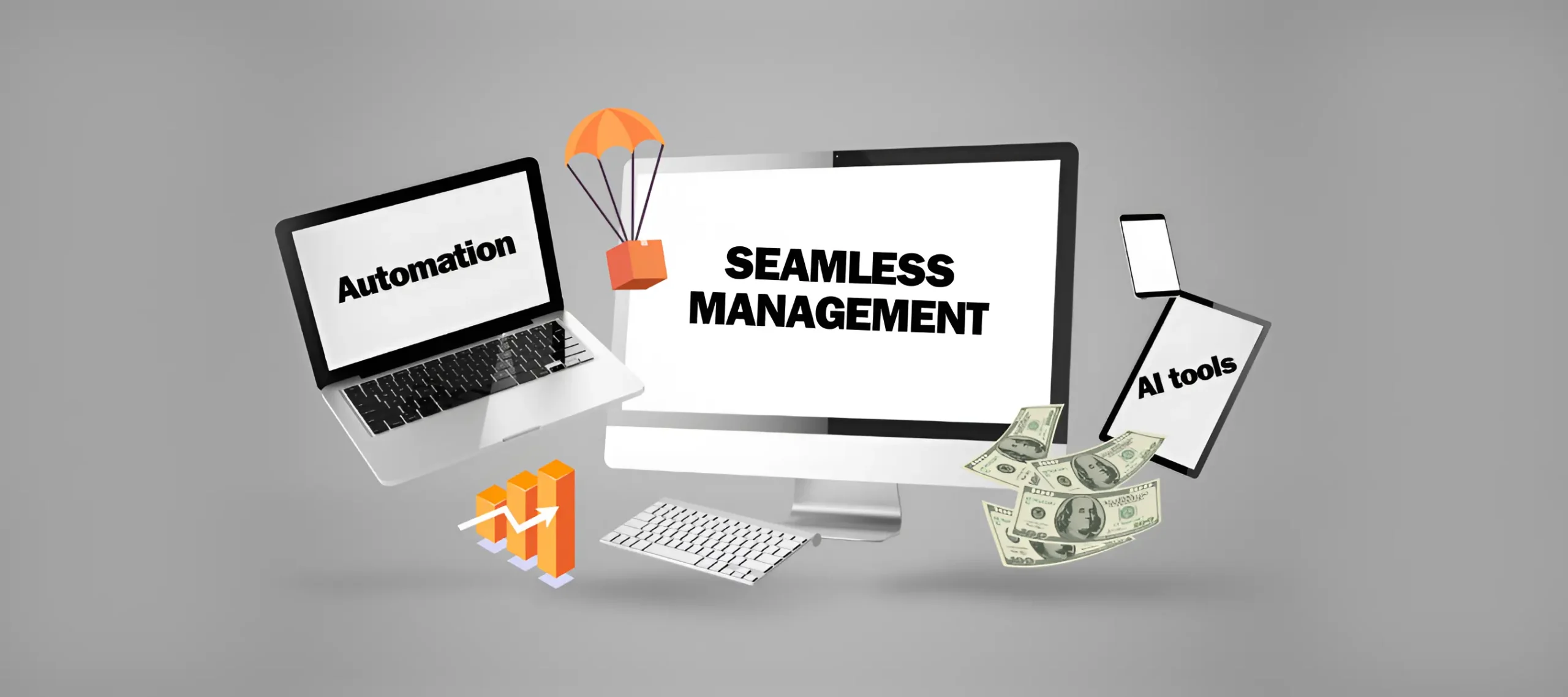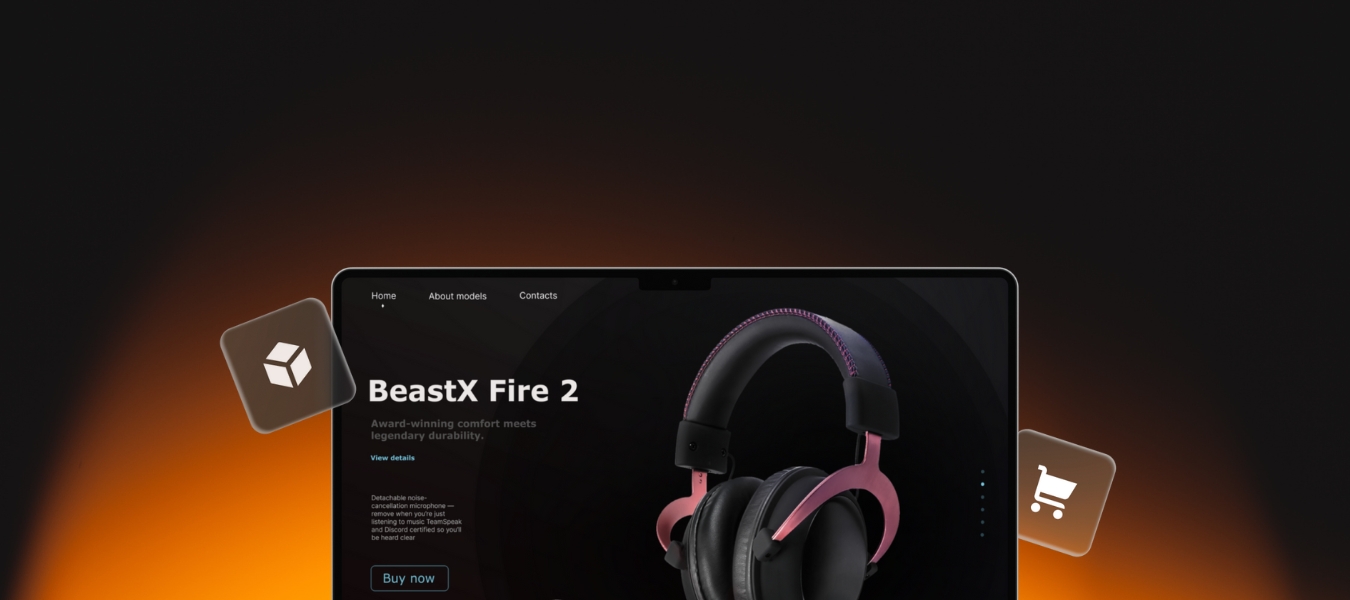



Dropshipping has become one of the most popular ways to start an online business, and for good reason. And if you’re here, you’re likely eager to make 2025 a standout year for your dropshipping business. Whether you’re a beginner anticipating your first sale or an experienced seller aiming to expand your reach, the right tools can transform your journey. Dropshipping allows you to build a thriving online store without the burden of managing inventory, and with the proper software, you can streamline operations and maximize your profits.
In this business model, you sell products online, and suppliers handle the storage and shipping — leaving you free to focus on marketing and growth. However, managing this process efficiently requires more than just enthusiasm; it demands smart solutions and strategy. That’s why we’ve compiled a detailed guide to the best dropshipping software for 2025, featuring six standout options: Mysellerhub, Spocket, AutoDS, Zendrop, Doba, and SaleHoo.
In our post we’ll explore each software’s key features, benefits, and ideal users, providing you with the insights you need to choose the perfect fit. We’ll also cover the fundamentals of dropshipping, explain why software is essential, and offer practical advice to boost your success.
Are you ready to discover the tools that will take your store to the next level? Let’s dive into this exciting world together!
Before we explore the software options, let’s establish a clear understanding of dropshipping. What is it, and why has it become such a popular choice for ecommerce entrepreneurs? At its core, dropshipping is a retail method where you operate an online store without physically holding the products you sell. Instead, you partner with suppliers who maintain the inventory and fulfill orders directly to your customers. You list their products on your site, set your prices, and keep the profit margin when a sale occurs.
Here’s how it works in practice:
This approach is appealing because it requires minimal upfront investment — no need to buy stock in bulk or rent a warehouse. It’s an excellent entry point for aspiring business owners and a flexible option for seasoned sellers looking to diversify. However, coordinating with suppliers, tracking inventory, and ensuring timely deliveries can become complex without the right support. That’s where dropshipping software becomes a MUST. Curious about how it simplifies the process? Great, let’s uncover more details!
(In case you are into for more in-depth insights about what is dropshipping & how it works — see other related guides in our blog).
You might be wondering: what exactly does dropshipping software do, and why should you consider using it? Dropshipping tools are designed to simplify and automate the selling process. They eliminate many of the time-consuming, repetitive tasks that come with running an online store — like manually adding products, updating inventory, or processing orders. Instead of juggling spreadsheets and supplier emails, you get an all-in-one tool that does the heavy lifting for you.
A good dropshipping tool should:
Simply put, dropshipping software saves you time, effort, and headaches — allowing you to focus on growth and marketing instead of logistics. Without software, you’d spend countless hours manually handling these tasks — emailing suppliers, updating listings, and calculating profits.
If you’re running a dropshipping business, using the right software is not optional — it’s essential. Manually managing inventory, orders, and pricing isn’t just exhausting; it also limits your ability to scale. Here’s why investing in high-quality dropshipping software is a smart move:
Instead of manually processing each order, automated software sends orders to suppliers in seconds. No more copying and pasting customer details or tracking shipments one by one.
Human errors can cost you money — forgetting to update stock, mispricing items, or sending orders to the wrong supplier. A dropshipping tool ensures everything runs smoothly without manual intervention.
With price tracking tools, you can adjust pricing in real time to stay ahead of competitors. Some platforms also provide trending product recommendations, helping you find high-demand products before the market gets oversaturated.
Selling on Shopify, eBay, Amazon, and TikTok Shop? Managing multiple platforms manually is sooo stressful… The best dropshipping software syncs everything across all platforms so you don’t have to.
Some software, like Mysellerhub and Spocket, provide access to vetted suppliers and private-label products that aren’t available elsewhere — giving you a competitive edge.
Now, let’s take a look at the best dropshipping software in 2025 and how each can help you expand and grow your business.
Choosing the right dropshipping software depends on your specific needs. Some sellers prioritize automation, while others focus on supplier quality or fast shipping. Here’s a breakdown of the top platforms and what they offer.
Mysellerhub is a powerful, 100% free dropshipping solution designed for sellers who want fast shipping, automation, and multi-channel integration without extra costs. Unlike many competitors, Mysellerhub focuses on providing top-tier features without charging monthly fees.
Key Features:
With zero monthly fees and industry-leading automation, Mysellerhub is perfect for sellers looking to scale efficiently. Plus, its intuitive interface and onboarding guides make it easy to use, even if you’re not tech-savvy.
Spocket is a great choice for sellers who want fast shipping and premium suppliers. This platform focuses on U.S. and European-based suppliers, meaning your customers won’t have to wait weeks for their orders to arrive.
Key Features:
Spocket is great for sellers targeting customers who value quick delivery and premium items, particularly in North America and Europe. Plans start at $39 per month, reflecting the value of its supplier network.
If you want a completely hands-free dropshipping experience, AutoDS is the way to go. This software is designed for maximum automation, meaning you can run your business with minimal manual work.
AutoDS supports multiple platforms, including Shopify, eBay, and Facebook Marketplace, making it a great choice for multi-channel sellers.
Key Features:
Starting at just $19.90 per month, it’s budget-friendly yet powerful. If you’re looking to streamline your workflow, AutoDS delivers efficiency without breaking the bank.
Zendrop is designed for sellers who want branding options, faster fulfillment, and direct supplier connections. Though integration options are quite limited (for now it’s Shopify and ClickFunnels), it offers custom packaging and private labeling, which is great for building a unique brand identity and image.
Key Features:
For those who want custom branding, personalization touch and extensive product access, Zendrop is a solid option. Plans start at $49 per month, with a free tier available for basic use, making it accessible for sellers at any stage.
Doba provides access to millions of dropshipping products in various niches, making it one of the largest dropshipping marketplaces. It’s great for sellers who want variety and flexibility in the products they offer.
Key Features:
This tool is perfect for sellers who want to expand their product catalog without the hassle of managing multiple supplier contacts. Pricing begins at $24.99 per month, offering solid value for its extensive network and tools.
SaleHoo is a supplier directory rather than a fully automated dropshipping tool, but it’s invaluable for sellers looking to find high-quality, vetted suppliers.
Key Features:
SaleHoo offers training materials and a supportive community, which is super handy for beginners and those who want to explore all the ins and outs of dropshipping. At just $67 per year, it’s a budget-friendly option that delivers significant value through its dual focus on functionality and education.
With so many dropshipping software options available, picking the right one can feel overwhelming. Should you go for the tool with the biggest supplier network? The one with the most automation? Or the one with the best price? The reality is, there’s no one-size-fits-all solution — the best dropshipping software depends on your specific business goals and needs.
To make the decision easier, here are the key factors you should consider when choosing dropshipping software:
Ultimately, the right dropshipping tool should streamline your operations and save you time. Take advantage of free trials or demo versions before making a decision — this way, you can test the platform’s usability and features before committing.
Anyone can start a dropshipping business, but not everyone will make it work. The difference? Mindset, consistency, and a willingness to learn. It’s all about understanding customer behavior, marketing effectively, and delivering an experience that keeps people coming back. The best dropshippers aren’t just sellers; they’re problem solvers, marketers, and strategists who know how to build trust and value.
So instead of waiting for the “perfect time” to start or scale, remember this: the only way to grow is by taking action today.





